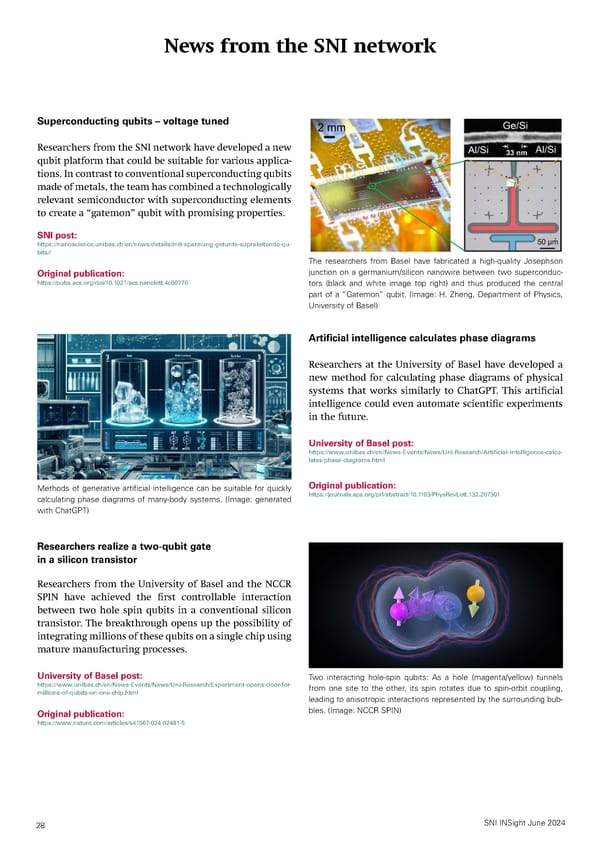News from the SNI network Superconducting qubits – voltage tuned Researchers from the SNI network have developed a new qubit platform that could be suitable for various applica- tions. In contrast to conventional superconducting qubits made of metals, the team has combined a technologically relevant semiconductor with superconducting elements to create a “gatemon” qubit with promising properties. SNI post: https://nanoscience.unibas.ch/en/news/details/mit-spannung-getunte-supraleitende-qu- bits// The researchers from Basel have fabricated a high-quality Josephson Original publication: junction on a germanium/silicon nanowire between two superconduc- https://pubs.acs.org/doi/10.1021/acs.nanolett.4c00770 tors (black and white image top right) and thus produced the central part of a “Gatemon” qubit. (Image: H. Zheng, Department of Physics, University of Basel) Artificial intelligence calculates phase diagrams Researchers at the University of Basel have developed a new method for calculating phase diagrams of physical systems that works similarly to ChatGPT. This arti昀椀cial intelligence could even automate scienti昀椀c experiments in the future. University of Basel post: https://www.unibas.ch/en/News-Events/News/Uni-Research/Arti昀椀cial-intelligence-calcu- lates-phase-diagrams.html Methods of generative arti昀椀cial intelligence can be suitable for quickly Original publication: calculating phase diagrams of many-body systems. (Image: generated https://journals.aps.org/prl/abstract/10.1103/PhysRevLett.132.207301 with ChatGPT) Researchers realize a two-qubit gate in a silicon transistor Researchers from the University of Basel and the NCCR SPIN have achieved the 昀椀rst controllable interaction between two hole spin qubits in a conventional silicon transistor. The breakthrough opens up the possibility of integrating millions of these qubits on a single chip using mature manufacturing processes. University of Basel post: Two interacting hole-spin qubits: As a hole (magenta/yellow) tunnels https://www.unibas.ch/en/News-Events/News/Uni-Research/Experiment-opens-door-for- from one site to the other, its spin rotates due to spin-orbit coupling, millions-of-qubits-on-one-chip.html leading to anisotropic interactions represented by the surrounding bub- Original publication: bles. (Image: NCCR SPIN) https://www.nature.com/articles/s41567-024-02481-5 SNI INSight June 2024 28
 SNI INSight June 2024 Page 27 Page 29
SNI INSight June 2024 Page 27 Page 29